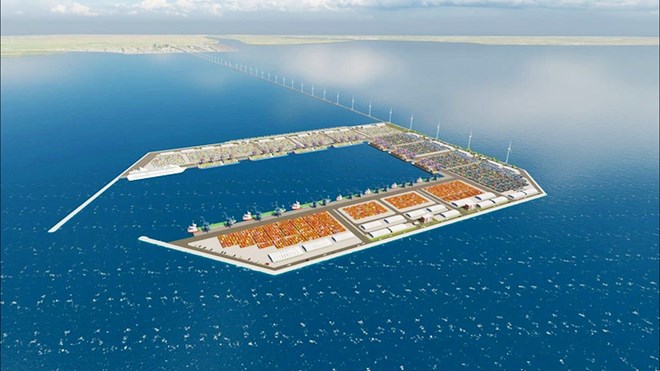On the morning of May 14, Deputy Secretary of the Provincial Party Committee, Chairman of Soc Trang Provincial People's Committee Tran Van Lau said that the Ministry of Construction's leaders signed a decision to approve the detailed planning of the development of the land and water of Soc Trang seaport in the 2021-2030 period, with a vision to 2050.
According to the Plan, the Soc Trang seaport system will include main wharf areas such as Ke Sach, Dai Ngai, Tran De and floating wharves, anchorage areas, transshipment areas and storm shelters.

The plan aims to 2030, the output of goods through the port reaches 30.7 - 41.2 million tons, of which containers from 0.97 - 1.36 million TEU. The number of passengers through the port is more than half a million. Technical infrastructure will also be developed synchronously with 6 ports, including 16 - 18 wharf, the total length from nearly 2,700 m to more than 3,400 m. The scope of land and port waters is clearly defined, suitable to the needs of trade development and shipping.
By 2050, the growth rate of goods is expected to remain at 5.5 - 6.1% per year; passenger traffic will increase by about 1.1 - 1.25%/year. In particular, the plan aims to continue developing new ports, forming gateways to the Mekong Delta region.
The total investment capital demand by 2030 is estimated at about VND61,513 billion. Of which, more than VND 19,600 billion is spent on public maritime infrastructure, the rest is spent on building and upgrading commercial ports for cargo handling services.
The demand for land use by 2030 is about 1,331 hectares, not including the area for industrial parks and logistics centers attached to the port. In terms of water, the planned use of more than 148,000 hectares includes the area of other water areas within the scope of management that do not have maritime works.
The planning prioritizes the implementation of public maritime infrastructure items at the port area off the Tran De border such as shipping lanes, breakwaters, overpasses and works to ensure maritime safety. In addition, the port will be invested in to serve Long Phu 1 Thermal Power Plant and domestic and foreign investors will be called upon to participate in developing the Tran De offshore port area.
The planning comes with a series of synchronous solutions, from perfecting policy mechanisms; mobilizing investment capital; developing high-quality human resources; environment, science and technology to strengthening international cooperation and supervising the implementation of the planning.











